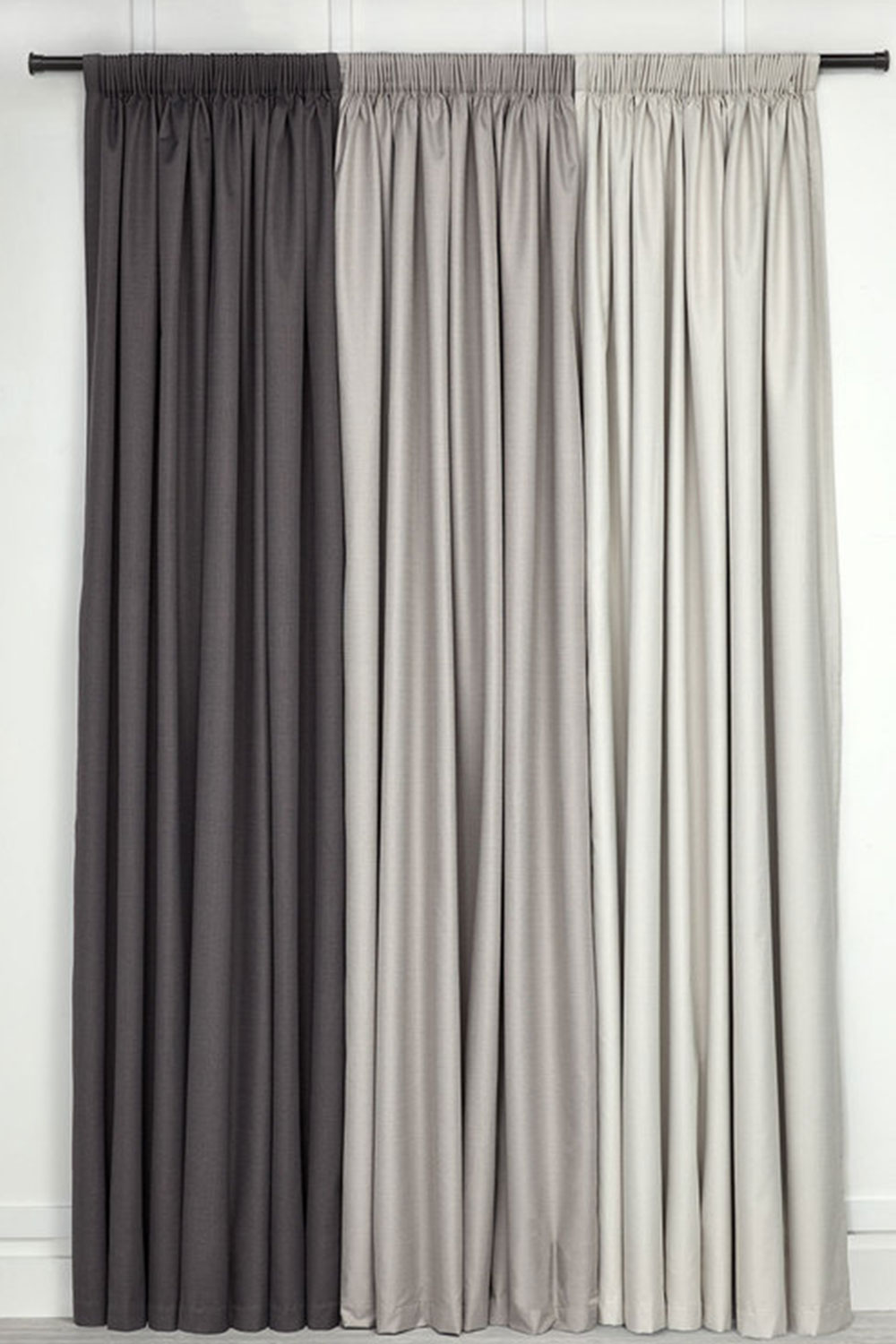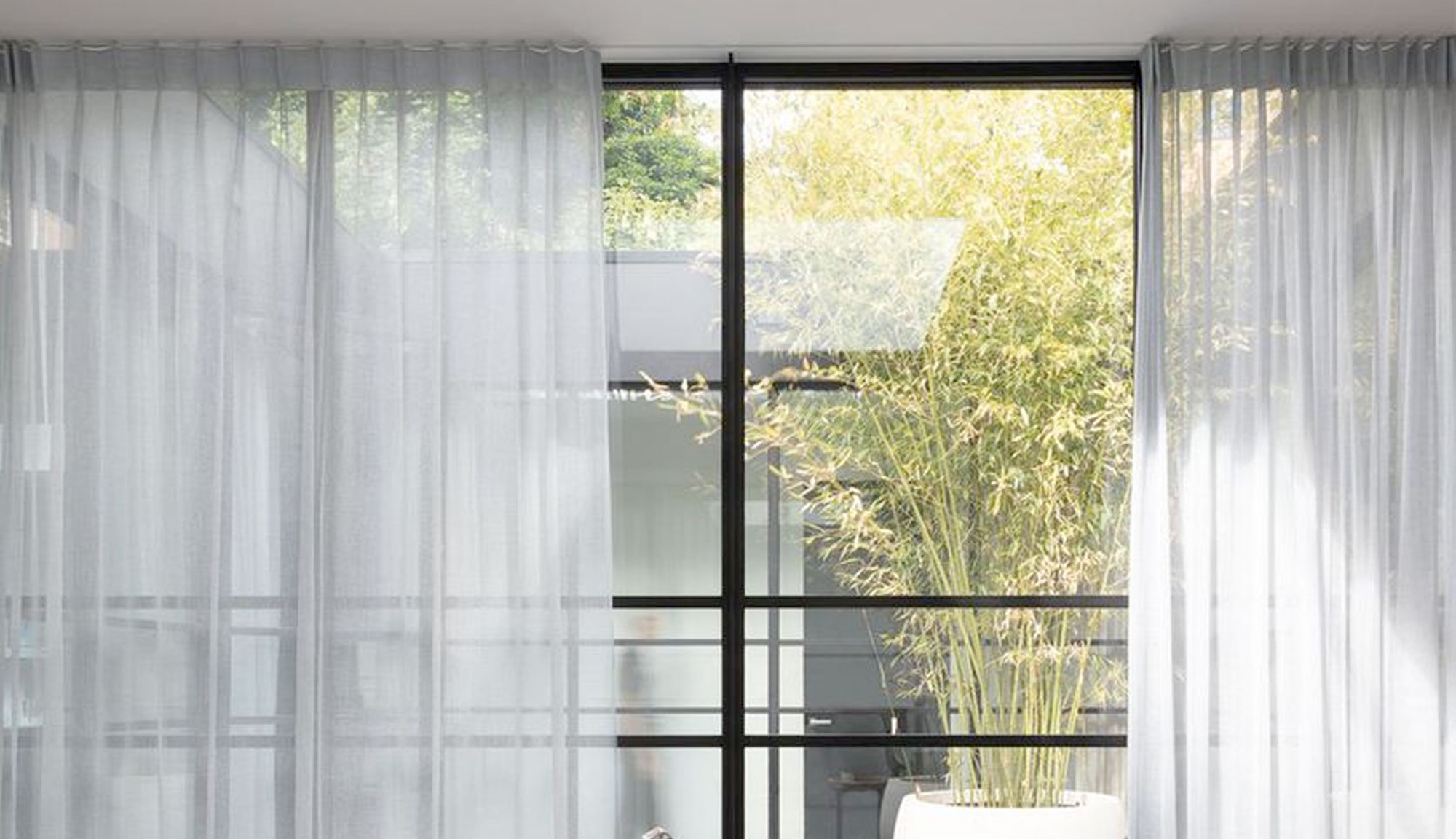
Choosing the right Curtain Header
Imagery courtesy of James Dunlop
There are a wide range of curtain header styles you can put on your curtains. The trick is to decide which one is right for your home. Curtain headers have a function, but they also have a significant impact on the look at feel of your room – traditional or modern, depending on the style you choose.
Curtains can completely transform an interior space, adding impact, privacy and a sense of comfort. A curtain well designed and chosen will have the feeling of enveloping you when they are closed but disappearing against the wall when they are open.
When designing custom made curtains there are a lot of decisions to be made. The first decision is your fabric choice. You need to consider aesthetics, performance and budget requirements.
You will also need to choose the right heading style. The Header is how the fabric is sewn or pleated at the top of the curtain. It affects the way the fabric will drape or hang, as well as affect functional characteristics such as stack back (the amount of space a curtain will occupy when fully drawn open).
Below we discuss the 6 most popular heading styles across Australia and New Zealand as outlined by our clients.


1) Box Pleat, also known as an Inverted Pleat
This is a classic curtain heading style that creates a tailored, elegant look. Deeply inverted pleats run across the top of the curtain to create a flat heading style that is designed to sit neatly under a curtain rod or on a track.
Creating uniformed folds, a box pleat is suited to most fabrics however consideration must be taken when using highly pattered designs, especially geometrics, as the pleating can disrupt the pattern match.
This is a great heading style when using a standard width fabric, as joins can be hidden into the fold of the pleat thus minimising the appearance of unsightly seams.


2) Wave Header, also known as an S-Fold
Modern and contemporary, a Wave curtain heading style creates a simple clean line which is perfectly suited to most solid, patterned or sheer fabrics. Through the use of a structured bukram tape, secured to the rear of the header, the fabric is evenly distributed in a symmetrical Wave formation.
The use of wide width fabrics is an effective way to achieve a continuous line across a window with no joins or seams, leading to manufacturing efficiencies with less stitching required.
Synthetic fabrics particularly suit a Wave heading style by maintaining stable formation over large windows as opposed to some natural fibres that may fall in a more relaxed manner.

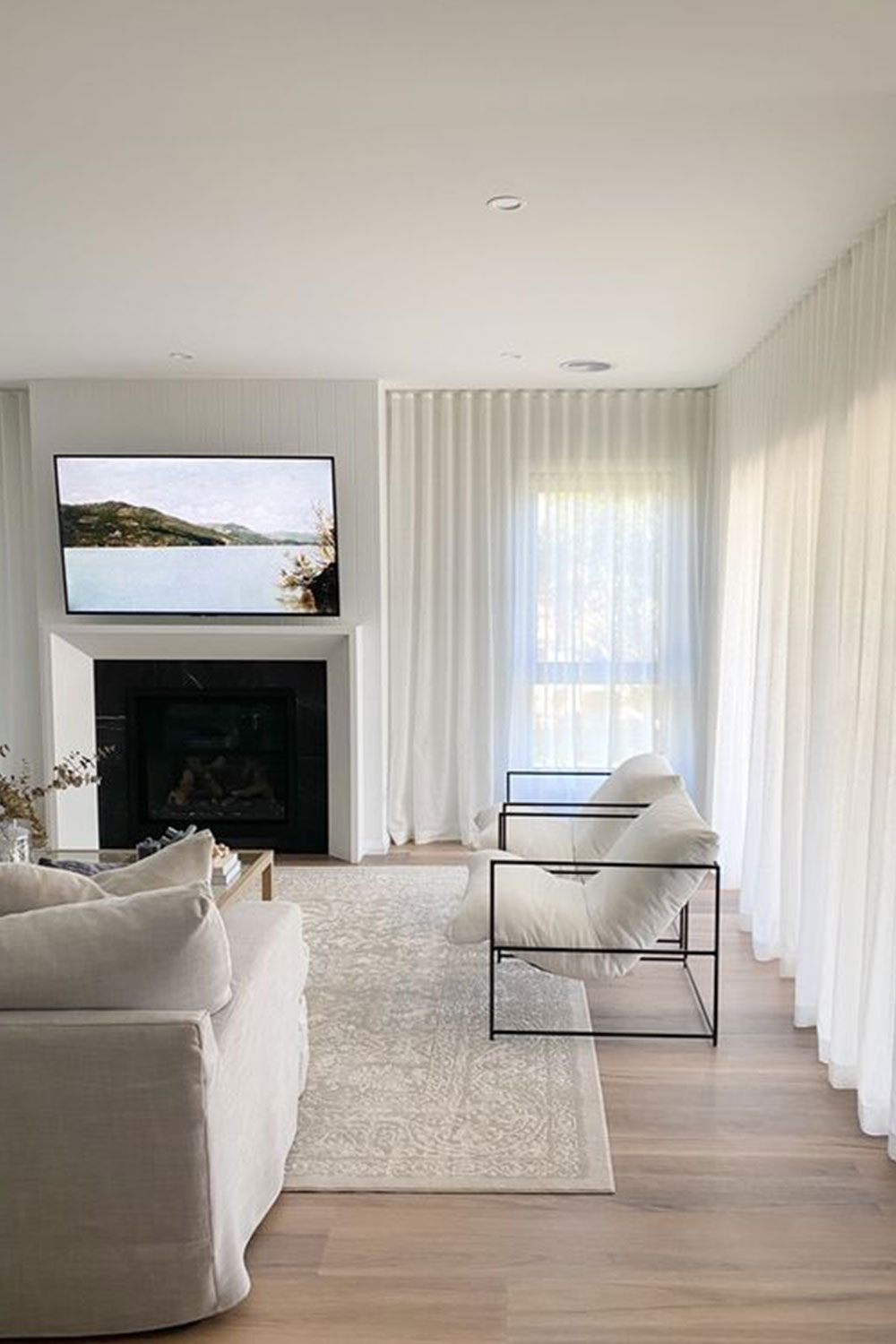
3) Flat Panel
This is a simple curtain heading style with very little fullness, creating a minimalist, contemporary aesthetic.
Perfect for solid and sheer fabrics as well as a wonderful option for patterned fabric as there are no pleats to interrupt the pattern repeat. A flat panel is also a great header style for a sheer behind a fully lined curtain on a double track as it sits neatly underneath, with very little stack-back.
Given the relaxed look of this header style it lends itself well to high quality linens, for casual sophistication.

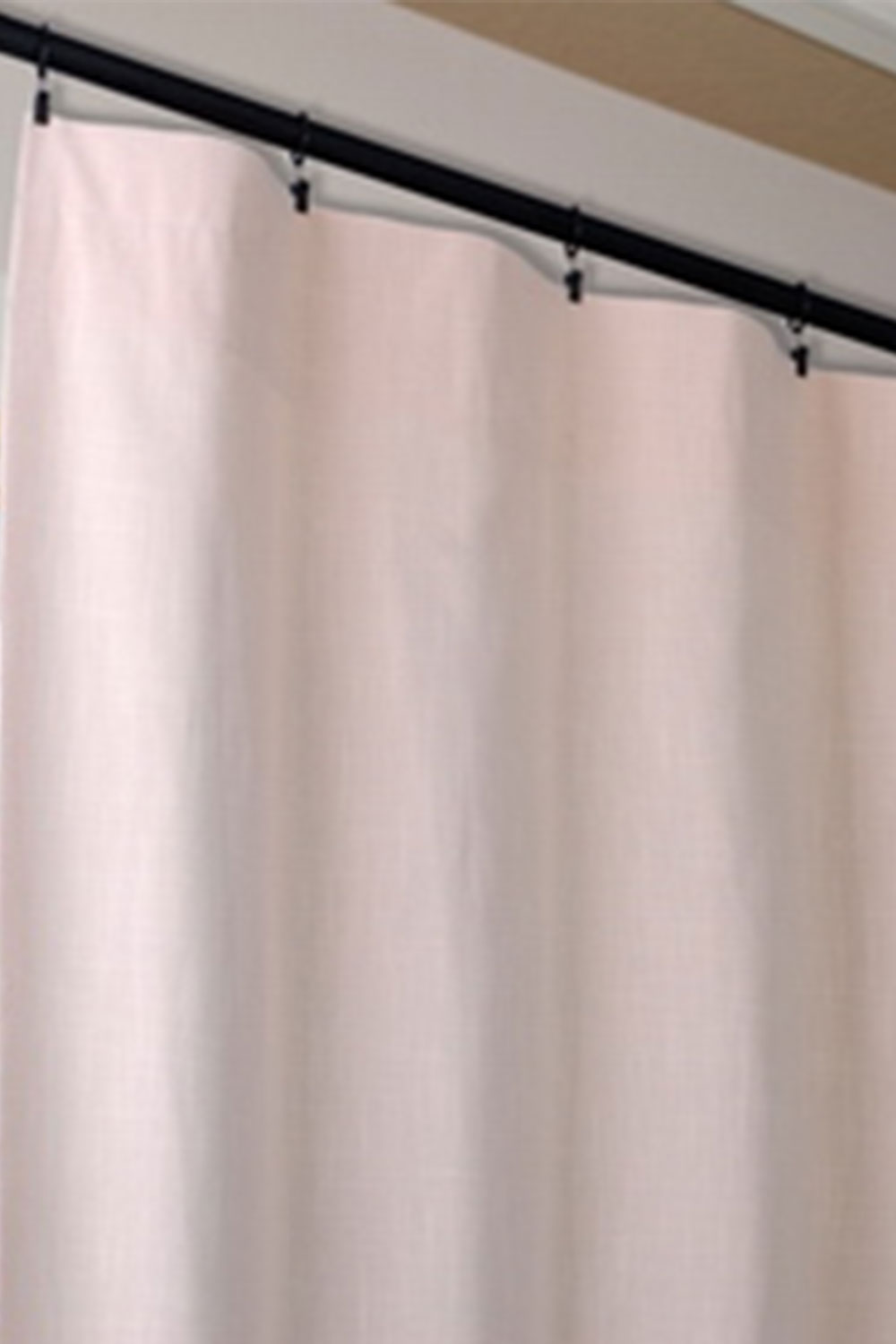
4) Pinch Pleat Headers – Single, Double and Triple Pleats
A Pinch pleat creates a classic look. The pleats are created through folded creases in the stiff buckram inserted within the header. Hooks are then inserted and the curtain can be hung on a track, or the more popular choice, is to hang this header style from a rod. The three varieties of Pinch Pleat headers are distinguished by the number of folds/creases at the top (single, double or triple) as well as the fullness, the stack back and the overall look.

Single pinch pleat, also known as the new york pleat
Of the three pinch pleat varieties, the single pinch pleat curtain heading style offers a more modern aesthetic. An economical use of fabric, ideal for small spaces that stacks well and is suitable for a range of fabrics including sheers, solids and patterns. Particularly effective for heavier fabrics.
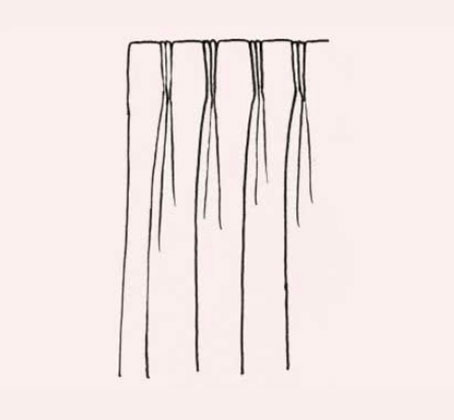
Double pinch pleat, also known as the dutch pleat
This curtain heading style is a versatile and often more traditional look that creates an even, consistent aesthetic with neat stackback. A contemporary feel, whilst maintaining fabric efficiency, the finished look is full, smart and elegant. The double pinch pleat is easy to install and has great draping qualities. The soft structured look of this pleat makes it suitable for not only full-length curtains but to curtains that finish at dado level (bottom third of the wall, approximately, windowsill height).
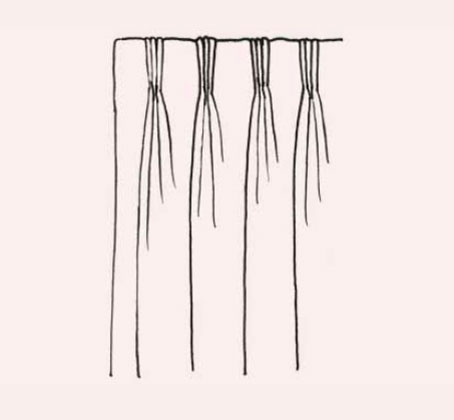
Triple pinch pleat, also known as the french pleat
This is often considered a very formal, traditional heading style that creates a sumptuous, full curtain. This decorative curtain heading style is best chosen for an expansive room, where it can be fully admired. It lends itself well to luxurious, opulent fabrics however it does require more fabric than the single and double pinch pleat curtain heading styles.
5) Pencil Pleat, also known as a Gathered Header
Like its name suggests, this curtain heading style has small pencil sized pleats that create a tightly gathered header. These are folds gathered closely together to resemble a row of pencils laid side-by-side. It provides a simple option of heading due to the nature of the heading tape, allowing you to gather the fabric to your desired fullness. The fullness of the pencil pleat will vary by the amount you gather the pull cords. Due to the fullness created by this heading style we recommend avoiding very heavy or bulky fabrics as they can disrupt the even distribution of the gathering.

